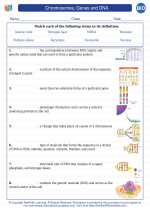Temperature
Temperature can affect biological processes such as enzyme activity and cellular metabolism. Different organisms have specific temperature ranges within which they can function optimally. For example, cold-blooded animals rely on external temperatures to regulate their body temperature, while warm-blooded animals maintain a constant internal temperature.
Light
Light is essential for photosynthesis in plants and is a crucial environmental factor for many other organisms. The duration and intensity of light can affect the behavior, reproduction, and growth of organisms. Some organisms have evolved specific adaptations to thrive in low-light environments, while others require direct exposure to sunlight for survival.
Water Availability
Water is a fundamental requirement for life. Organisms have adapted to different levels of water availability, ranging from aquatic environments to arid deserts. The availability of water can influence the distribution of species and their physiological processes.
Soil Composition
The composition of soil can impact the types of plants that can grow in a particular area. Soil pH, nutrient levels, and texture can influence the growth and health of plants, which in turn affects the organisms that depend on those plants for food and shelter.
Presence of Other Organisms
The interactions between different organisms in an ecosystem can significantly impact their survival and reproduction. Predation, competition for resources, and symbiotic relationships are examples of how the presence of other organisms can shape the dynamics of an ecosystem.
Impact on Human Activities
Understanding environmental factors is also important for human activities such as agriculture, urban planning, and conservation efforts. By understanding how environmental factors influence the distribution and behavior of living organisms, we can make informed decisions to minimize negative impacts and promote sustainable coexistence with the natural world.
.◂Biology Worksheets and Study Guides High School. Chromosomes, Genes and DNA

 Worksheet/Answer key
Worksheet/Answer key
 Worksheet/Answer key
Worksheet/Answer key
 Vocabulary/Answer key
Vocabulary/Answer key
 Vocabulary/Answer key
Vocabulary/Answer key
 Vocabulary/Answer key
Vocabulary/Answer key
